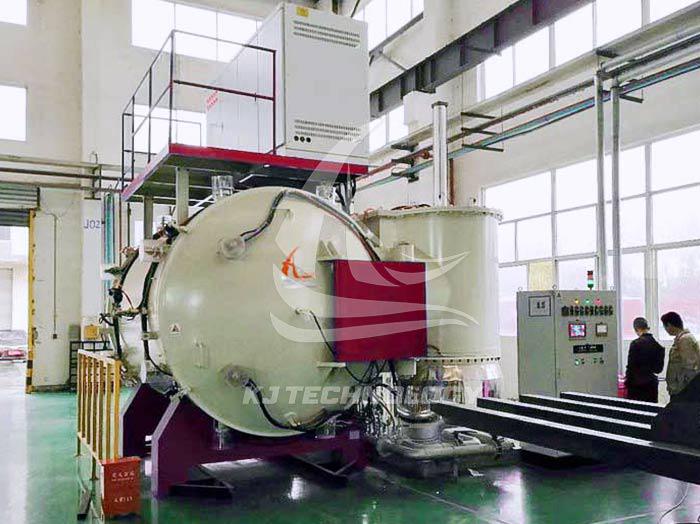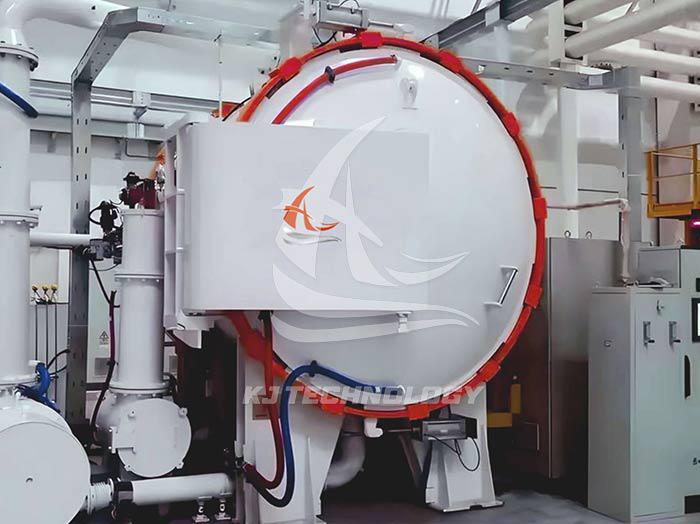Common faults and solutions of electric heating high-temperature vacuum brazing furnace
 03-26-2025 Author: KJ technology
03-26-2025 Author: KJ technology
The common faults and solutions of electric heating high-temperature vacuum brazing furnace are as follows:
1. Temperature control issues
Fault manifestation:
The temperature cannot be stabilized at the set value and fluctuates greatly.
The displayed temperature does not match the actual temperature.
Possible reasons:
Thermocouple wire breakage, damage, or incorrect installation position.
Temperature control instrument malfunction.
Heating element aging, damage or insufficient power.
resolvent:
Replace the thermocouple with a new one and ensure that its installation position is accurate.
Perform maintenance or replacement according to the temperature control instrument manual.
Check the heating element, such as whether the graphite heating tube is contaminated and whether the resistance value has increased. If there is a problem, replace it in a timely manner and ensure that the resistance of the new graphite tube matches the voltage regulator.
2. Vacuum degree issue
Fault manifestation:
Unable to reach the maximum vacuum degree.
Vacuum degree decreases or leaks.
Possible reasons:
The aging, damage, or improper installation of sealing components can lead to furnace leakage.
Vacuum pump malfunction, such as low pumping efficiency, oil contamination, and shaft seal wear.
There are air leakage points in the vacuum system, such as poorly sealed valves and loose pipeline connections.
resolvent:
Check and replace aging and damaged seals to ensure proper installation.
Inspect or replace the vacuum pump to eliminate issues such as oil contamination and wear.
Perform leak detection on the vacuum system, identify the leak points and repair them, such as replacing valve seals, tightening pipeline connections, etc.
3. Heating issue
Fault manifestation:
The temperature rises slowly.
The heating power cannot reach the rated value or cannot be heated up.
Possible reasons:
Magnetic regulator malfunction.
The heating element is short circuited or open circuited.
The power supply voltage is unstable or lacks phase.
resolvent:
Inspect the magnetic voltage regulator and check for loose wiring and normal contacts.
Check the resistance value of the heating element and replace the short circuited or open circuited heating element.
Use a voltage regulator to stabilize the power supply voltage and check for any phase loss issues in the electrical circuit.
4. Transmission component issues
Fault manifestation:
The transmission components do not operate flexibly.
There is abnormal noise.
Limit failure or inability to reach the predetermined position.
Possible reasons:
Gear wear and poor lubrication.
Motor malfunction.
The limit switch is damaged or improperly adjusted.
Loose coupling or different shafts.
resolvent:
Lubricate or replace worn gears.
Repair or replace the motor.
Replace the damaged limit switch or adjust its position.
Tighten the coupling or adjust its coaxiality.
5. Other faults
Fault manifestation:
The vacuum valve switch is malfunctioning.
Mechanical pump malfunction (such as inability to start, reverse rotation direction, inflexible operation, etc.).
The insulation resistance is too low.
Possible reasons and solutions:
Vacuum valve switch failure: It may be due to insufficient compressed air pressure or a malfunction of the solenoid valve. It is necessary to ensure that the air pressure is not less than the specified value and repair the solenoid valve.
Mechanical pump failure: Check the position of the motor starter switch and overload protection device and cooling water switch, replace the two-phase wiring in the motor three-phase, repair according to the instructions, and eliminate oil pollution.
Low insulation resistance: It may be due to the presence of carbon fibers around the electrode, and the flying copper should be removed, treated in an oven, and the carbon fibers should be cleaned.








